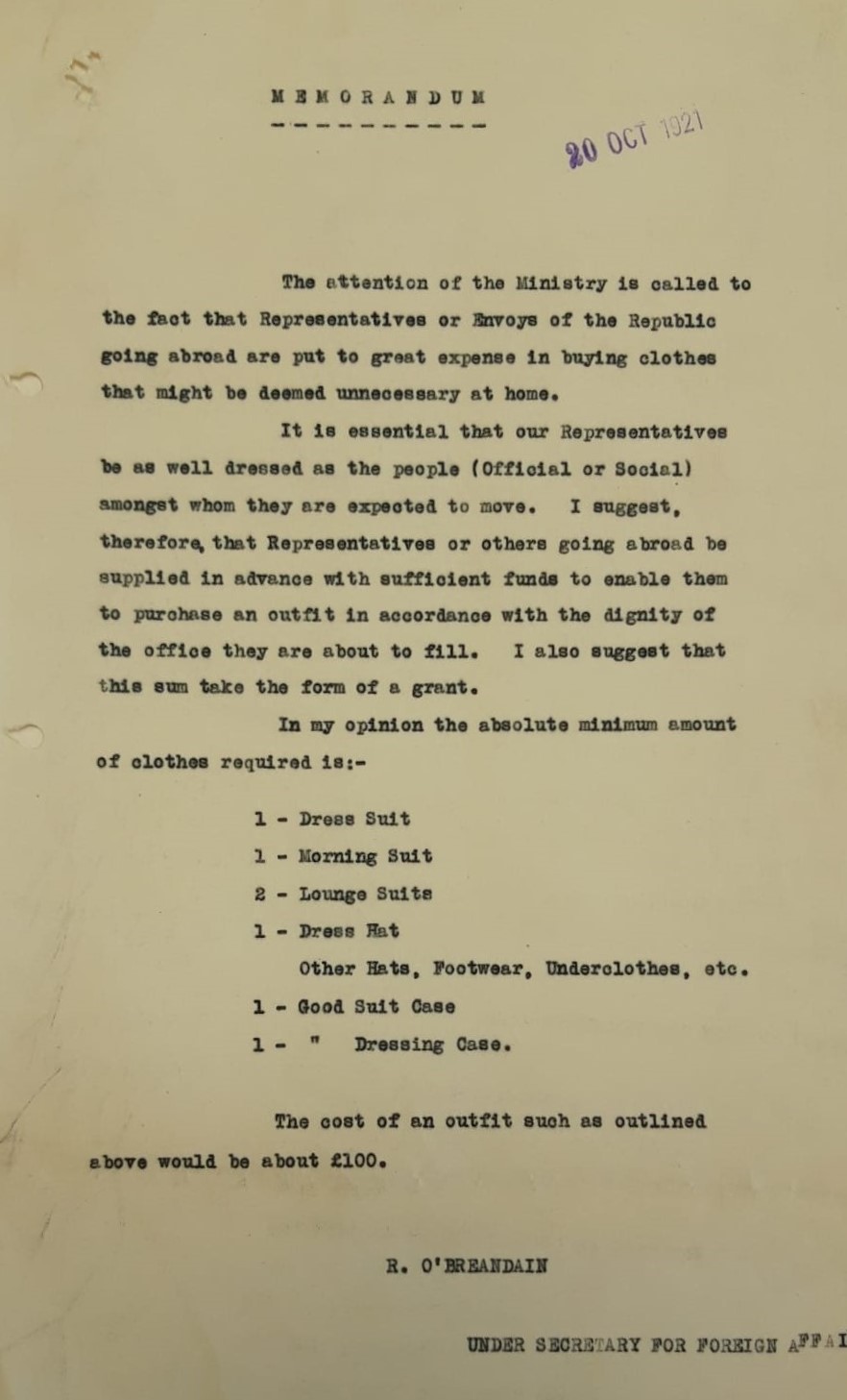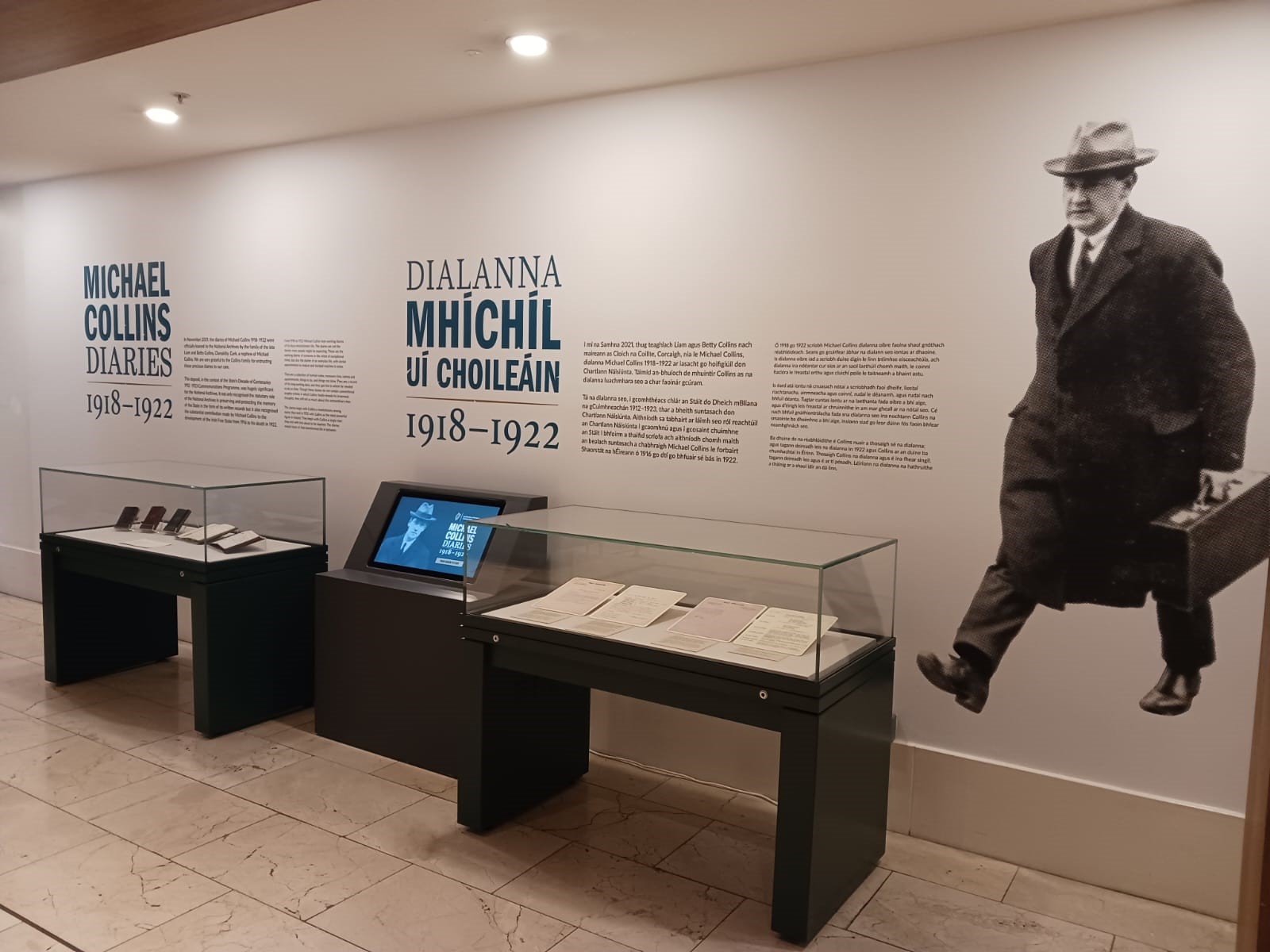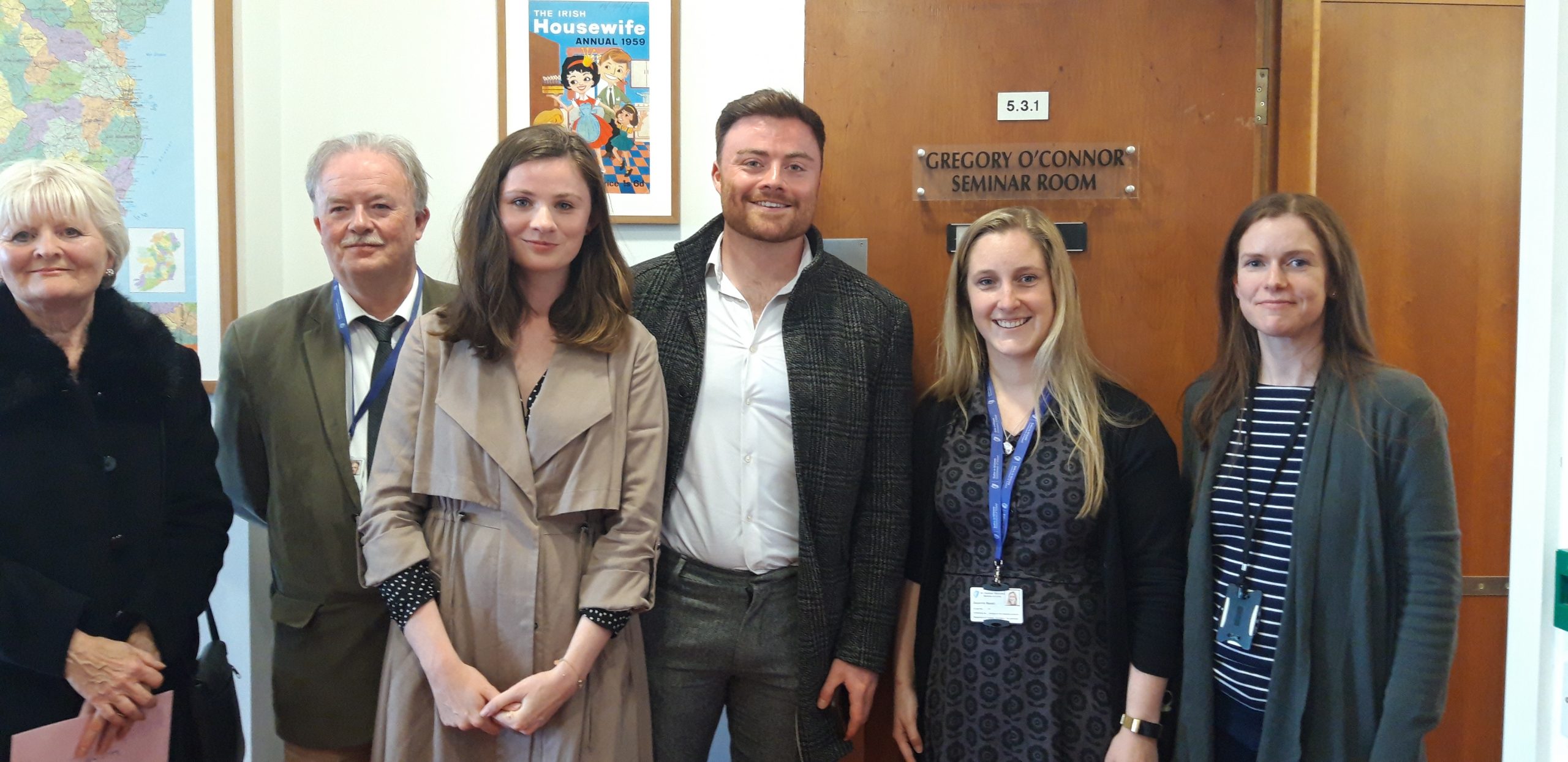Behind the Scenes
Behind the Scenes: The Treaty, 1921- Stories from the Archives, Part 1

Last year, the National Archives’ Commemoration Programme marked significant events of 1921, culminating in the signing of the Anglo-Irish Treaty. A major exhibition, The Treaty, 1921: Records from the Archives, previewed in the British Academy in London on 11 October and opened in Dublin Castle on 6 December. https://www.nationalarchives.ie/2021commemorationprogramme/the-treaty-1921-records-from-the-archives/
The exhibition is on display in Dublin until 27 March after which it will tour to 7 counties across the country between April and June 2022. A comprehensive exhibition catalogue, featuring over 100 document images and 30 photographs relating to the period will be published in partnership with the Royal Irish Academy in March 2022. A high quality educational resource will be distributed to secondary schools nationwide to accompany the exhibition tour. A virtual tour of the Treaty exhibition is accessible here.
In preparing for the exhibition, the National Archives curatorial team reviewed a lot of archival material both from the National Archives and in collections held by other institutions. The team was delighted to partner with National Library of Ireland, the Military Archives and UCD Archives when it came to the final selection of documents. It was, however impossible to include everything. Here, archivist Suzanne Bedell looks at a document which helped shape our understanding of the importance of appearances for the delegation.
Travelling in Style
The Irish delegation was in the spotlight from the very second they started their journey to London on 8th October 1921 for the Treaty negotiations which began on 11th October 1921. The press were attentively covering the discussions and crowds from the Irish community in London gathered outside 10 Downing Street to show their support. The plenipotentiaries were representing Ireland on a global stage with countries such as America following what was happening. The delegates all knew the importance of the occasion and therefore they had to look the part.
A memorandum by Robert Brennan, Under-Secretary for Foreign Affairs, dated 20 October 1921 highlights the importance of dressing accordingly during this momentous period in Irish history. The delegates were given a grant to purchase “an outfit in accordance with the dignity of the office they are about to fill.”
Brennan outlines in the memorandum the minimum amount of clothes that was required of the Irish Delegate:
“1-Dress Suit 1-Morning Suit 2-Lounge Suits 1-Dress Hat, other Hats, Footwear, Underclothes, etc. 1-Good Suit Case 1-[Good] Dressing Case.”
He estimates the cost of the outfits to be around £100. The equivalent in today’s currency is £2,905.77/€3407.72.
This document is important as it gives insight into how the delegates presented themselves. The recommended dress reveals the fashion of our politicians during that time, the type of events the Irish plenipotentiaries attended and the cost of such items from that period. It is interesting how Robert Brennan insisted that the delegates who travelled to London were reimbursed for the clothes that they wore. Brennan claims they were being put to great expense in buying clothes that might be deemed unnecessary at home. From looking at the converted price of £100 to what it is today, one can understand why.


